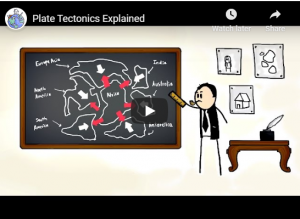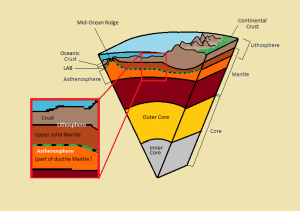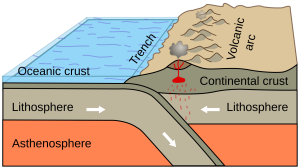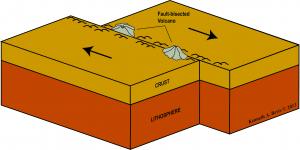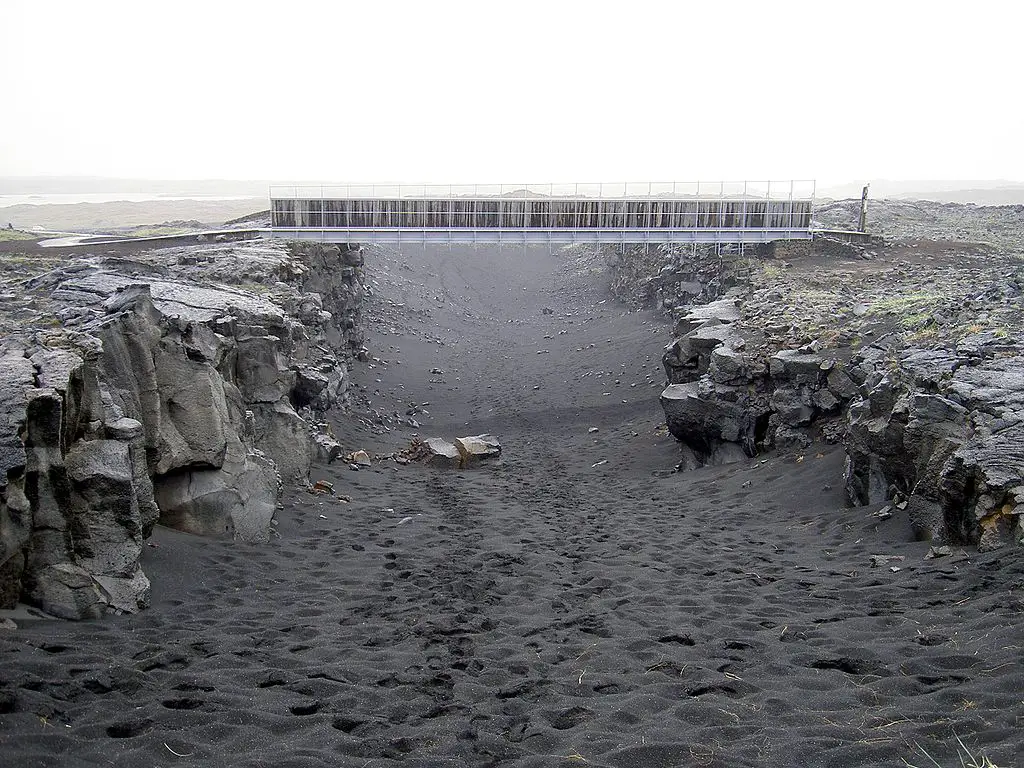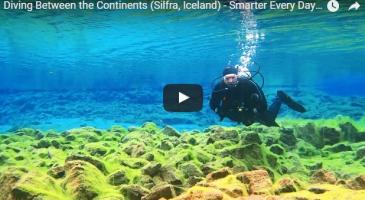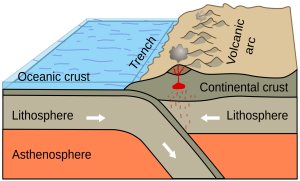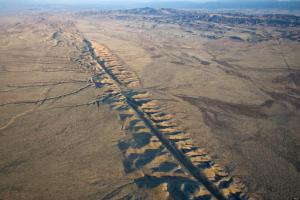Plate Tectonics
Scientists combined the Continental Drift hypothesis and the Theory of Seafloor Spreading in a new theory called The Theory of Plate Tectonics.
The following video does a fantastic job explaining Plate Tectonics.
The crust and upper part of the mantle are broken into pieces or plates. We also call the crust and upper part of the mantle the lithosphere. The lithosphere is about 100 km thick and is made of less dense material than the material below it, so these plates float around on part of the mantle called the asthenosphere. As these plates move, they crash into each other, separate, and slide past each other.
Plates that move away from each other are found at divergent boundaries. New crust is formed at divergent boundaries. At these locations, the crust is thinned and stretched with tensional forces.
At convergent boundaries, the plates crash into each other. The force that causes convergent boundaries is compression. You can have two oceanic plates crash into each other, you can have 2 continental plates crash into each other, and you can have oceanic and continental plates crash into each other. The most powerful earthquakes and tsunamis will occur at these types of boundaries. If two plates crash into each other and one is denser than the other, then the dense plate will slide underneath the less dense plate creating what is known as a subduction zone. At the edges of these subduction zones, we see trenches, some of the deepest places on Earth.
The third type of boundary is called a transform boundary. When two plates slide past each other faults like the San Andreas Fault are formed. The forces that cause transform boundaries are shear and friction. The word shear should remind you of scissors or shears used to cut wool from sheep. Earthquakes are going to be very common at these types of boundaries.
You should be wondering how these large pieces of landmass are moving into, away from, and past each other. What mechanism is powerful enough for this to happen? Below is a video of a lava lamp. Ask yourself how this lava lamp is working.
You notice that there is a lamp at the base. As the green wax heats up, it expands and then becomes less dense. Remember less dense object float, so the wax floats to the top and begins to cool off. When the wax cools, it shrinks in size causing its density to increase and become denser than the surrounding area so that it sinks back to the bottom.
Scientists believe that inside the mantle there is hot molten material that comes from the core. As it heats up, it rises, hits the bottom of the plates, cools off, and then sinks back down. We call these convection currents. With a partner use your hands to model convection currents that would create divergent, convergent, and transform boundaries.
Now that we have some understanding of convection current driving plate tectonics, complete the following lab.
SUSD5 Student Version of the Phet Plate Tectonics Lab
Purchase this Phet Plate Tectonics Lab for 0.50 cents at Teachers Pay Teachers
You should have noticed from the lab that as tension pulls apart the crust at divergent boundaries, rifts, cracks, ridges seas, and oceans are formed. Divergent boundaries also create fault-block mountains and normal faults.
If two continental plates converge, some of the tallest mountains are formed. Many rocks are folded and metamorphosed with intense pressure caused by compression. This is how the Himalayan Mountains were formed. An oceanic plate will subduct below a continental plate, melt and then rise to the surface forming volcanoes. At these subduction zones, trenches are formed. If two ocean plates collide, the older plate which happens to be the densest, will subduct, melt and rise to the surface forming volcanic island arcs.
Finally as mentioned before, transform boundaries are created when two plates slide past each other, forming ridges and faults that are easily visible.










